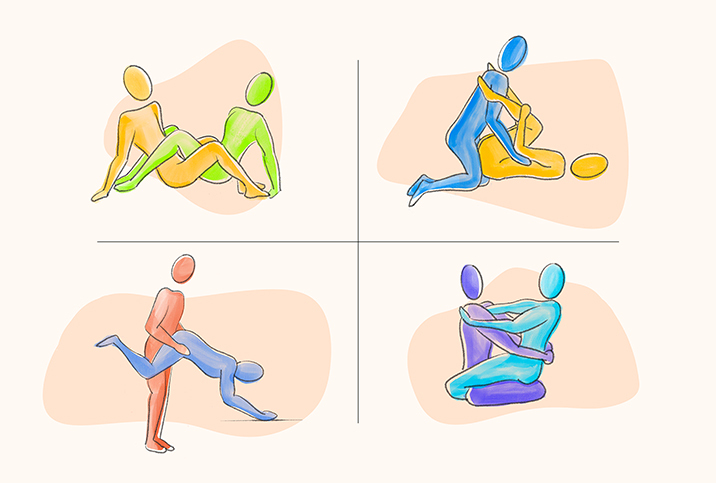Does Sex Count as My Daily Exercise?

If you’re doing it right, sex should always break a sweat—not just because you’re up close and personal with another naked human, but hopefully because you’re both putting in the work to get each other off. Anyone who’s been left panting or sore after vigorous sexual activity might wonder: Why slog it out on the treadmill, elliptical, StairMaster or bike if you could screw instead?
For years, most Americans have thought of exercise as something that has to occur in 30-, 45- or 60-minute increments (thanks, boutique fitness studios). But when the U.S. Department of Health and Human Services updated its recommendations for exercise in 2018, it declared that workouts of less than 10 minutes counted toward recommended weekly activity goals: 150 minutes of moderate aerobic activity, 75 minutes of vigorous aerobic activity or some combination of the two.
Even a shorter romp, then, could conceivably count toward your daily activity goals. One 2020 study published in the Journal of Sexual Medicine found that it takes heterosexual women, on average, about 13.41 minutes to reach orgasm; a 2018 survey by the sex toy retailer Lovehoney found that sex between most heterosexual couples lasts an average of 19 minutes, 10 of which go toward foreplay and the rest toward penetrative intercourse.
But determining whether your sexual activity counts as exercise isn’t just about how long you hook up, it’s about how intense your hookup is. To estimate energy expenditure during physical activity, scientists use a unit that measures the metabolic equivalent for task (MET). One MET is what your body burns at rest. In a 2013 study published in the journal PLOS One, men expended an average of six METs and women burned an average of 5.6 METs during a sex session lasting around 25 minutes (including foreplay); those numbers are, respectively, on par with running a 15-minute mile or hiking at a normal pace through a field—all of which count as moderate-intensity activity.
While scientists use MET, others can simply use their heart rate to assess how intense any given activity is. During moderate-intensity physical activity, your target heart rate should be between 64 and 76 percent of your maximum heart rate, according to the Centers for Disease Control and Prevention; that range jumps to between 77 and 93 percent of your max heart rate for vigorous-intensity physical activity.
Your maximum heart rate is the highest heart rate you can attain during exercise. To estimate it, subtract your age from 220. A 35-year-old, for example, would have a max heart rate of 185. If you do the math, that means a 35-year-old’s heart rate should be between 118 and 141 beats per minute during moderate-intensity activity and between 142 and 172 beats per minute during vigorous-intensity activity.
If you’re curious about just how high your heart rate gets during sex, you can strap on an activity tracker; it will automatically log your heart rate so you can check your stats post-orgasm and even compare different bouts. Part of the fun is experimenting on your own to figure out how aggressive and inventive any sexscapade needs to be to reach those figures.
If sex isn’t spiking your heart rate high enough, that’s OK—anything that boosts your heart rate, even for short periods of time, will still benefit your health in the long run. On the workout front, even lazy sex engages your muscles and taxes your flexibility. And on a deeper level, sex can boost immunity, reduce stress levels, improve sleep and lower your risk of mortality.
That doesn’t mean you should use sex to justify skipping your workout, though. In a best-case scenario, you should be doing both regularly. Just consider sex an added bonus to your weekly activity goals—and the more physically active you are, the more spirited you’ll be in the bedroom (and the more health benefits you’ll reap between the sheets!).


















